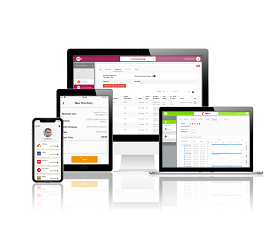design spirint
The sprint is a five-day process for answering critical business questions through design, prototyping, and testing ideas with customers. Developed at PlusInfosys, it's a "greatest hits" of business strategy, innovation, behaviour science, design thinking, and more-packaged into a battle-tested process that any team can use.
User feedback on a functioning prototype in only 5 days. Inspired by the now-famous Google Ventures methodology, each project starts with an intense, 5-day discovery process that ends with empirical validation with real clients. Design Sprint solves big problems by letting you test new ideas in just 5 days.
Working together in a sprint, with the 5 day process, you can shortcut the endless-debate cycle and compress months of time into a single week. Instead of waiting to launch a minimal product to understand if an idea is any good, you'll get clear data from a realistic prototype. The sprint gives you a superpower: You can fast-forward into the future to see your finished product and customer reactions, before making any expensive commitments.
The Process:
Below we've assembled a basic DIY guide, including daily checklists, videos, and other resources.
Monday
Monday's structured discussions create a path for the sprint week. In the morning, you'll start at the end and agree to a long-term goal. Next, you'll make a map of the challenge. In the afternoon, you'll ask the experts at your firm to share what they know. Finally, you'll pick a goal: an ambitious but manageable piece of the problem that you can solve in one week.
Tuesday
After a full day of understanding the problem and choosing a target for your sprint, on Tuesday, you get to focus on solutions. The day starts with inspiration: a review of existing ideas to remix and improve. Then, in the afternoon, each person will sketch, following a four-step process that emphasizes critical thinking over artistry. You'll also begin planning Friday's customer test by recruiting customers that fit your target profile.
Wednesday
By Wednesday morning, you and your team will have a stack of solutions. That's great, but it's also a problem. You can't prototype and test them all-you need one solid plan. In the morning, you'll critique each solution, and decide which ones have the best chance of achieving your long-term goal. Then, in the afternoon, you'll take the winning scenes from your sketches and weave them into a storyboard: a step-by-step plan for your prototype.
Thursday
On Wednesday, you and your team created a storyboard. On Thursday, you'll adopt a "fake it" philosophy to turn that storyboard into a prototype. A realistic facade is all you need to test with customers, and here's the best part: by focusing on the customer-facing surface of your product or service, you can finish your prototype in just one day. On Thursday, you'll also make sure everything is ready for Friday's test by confirming the schedule, reviewing the prototype, and writing an interview script.
Friday
Your sprint began with a big challenge, an excellent team-and not much else. By Friday, you've created promising solutions, chosen the best, and built a realistic prototype. That alone would make for an impressively productive week. But you'll take it one step further as you interview customers and learn by watching them react to your prototype. This test makes the entire sprint worthwhile: At the end of the day, you'll know how far you have to go, and you'll know just what to do next.
What Are Sprints For?
Costs from switching context, communication barriers and other inefficiencies with exchanges over long development periods stifle the process. A Design Sprint removes these problems and provides a great ROI - teams channel in on the challenge to experience incredible results. By the end of a Sprint, your organization will be well-equipped to breathe life into an idea.
01
Build New Products
02
Solve Challenging Problems
03
Experiment with Ideas
04
Align Efforts
05
Develop a Roadmap
06
Drive Innovation
07
Develop a successful Campaign
08
Learn from User Feedback
09
Churn Momentum
What Outcome Should You Expect?
After the 5-day Sprint, the prototype PlusInfosys helps you develop and user feedback clarifies the next steps. From here, you have the tools you need to refine the idea into a successful product.
Why PlusInfosys?
We select the best talent for your Design Sprint - our team and experts understands how to foster unity through these many years of experience. Our people know the process and work with your team to help you understand your goals, develop a strategy then create a fantastic product.



